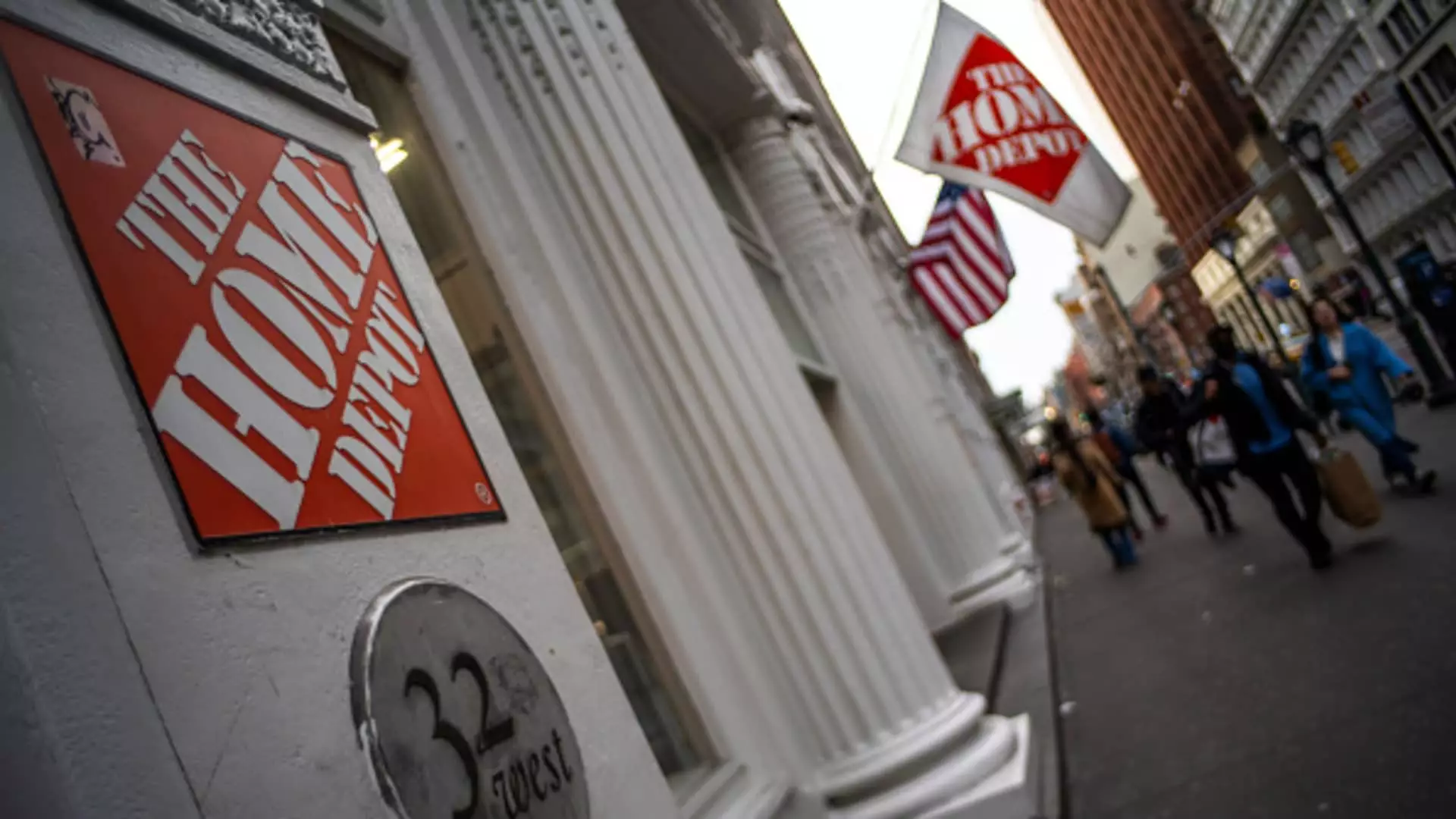The latest survey conducted by Morgan Stanley involving a diverse range of contractors—from general builders to specialized painters—reveals an interesting dichotomy within the housing market’s pulse. While the general economic landscape remains clouded with uncertainty, a surprising optimism pervades the construction and remodeling sectors. This optimism stands in stark contrast to the pervasive angst felt in other segments of the economy, largely driven by inflation, rising material costs, and tariff uncertainty. According to the survey of 131 professionals, a significant majority expressed confidence that business would improve, a sentiment that could bode remarkably well for companies like Home Depot.
The question is whether this sense of stability may be an illusion, a brief respite from the storm clouds of potential economic downturns. Nonetheless, what shines through in the data is an indication that the remodeling sector anticipates a resurgence of larger projects, even while economic challenges loom large. As homeowners continue to invest in their aging properties—with over half being over 40 years old, as noted by Home Depot’s CEO Ted Decker—there is reason to believe that the demand for home improvement will keep the contractors bustling, potentially translating into significant business for suppliers like Home Depot.
The Backlog Dilemma
While the prospect of increased workload is promising, the backbone of this optimism lies in the reported healthy backlog of projects among contractors. A backlog is crucial as it acts as a financial buffer, ensuring that contractors remain afloat even in the face of market volatility. However, the real uncertainty lurks in the details. Although many contractors are projecting growth, they remain acutely aware of the external factors that could curtail this upward trend, particularly escalating material prices which have been driven by inflation and tariffs.
Morgan Stanley’s survey highlights that while rising tariffs occupy contractors’ minds, they may have underestimated the degree of concern gripping these professionals. It’s worth noting that the timing of the survey right before significant tariff announcements could mean that the level of anxiety is understated. For Home Depot, such tariffs pose a substantial risk, one that the company is keenly aware of yet is navigating with a strategically cautious approach. As they continue to remind stakeholders of their commitment to customer value, it raises doubts about whether they can maintain this ideal amid skyrocketing costs.
Home Depot’s Strategic Positioning
Home Depot’s robust strategy to strengthen its position in the professional segment demonstrates a forward-thinking approach that distinguishes it from its competitors. Their $18.25 billion acquisition of SRS Distribution is emblematic of a broader vision that sees value in catering to professional customers. Historically, these professionals have spent significantly more than do-it-yourself clients, making them a pivotal target for the retailers’ growth plans.
Furthermore, in interviews, CEO Ted Decker has pointed out the necessity for home improvements in older houses, emphasizing how essential Home Depot is to this resurgence. Yet, amidst this optimism lies an undeniable challenge: catering to professional clients while negotiating the complications of economic uncertainty. The narrative woven through these various threads indicates that while Home Depot has positioned itself for significant growth, the success of its strategy hinges on external factors beyond its control.
The Investment Perspective: Long-Term Vision vs. Short-Term Fluctuations
For investors, the question becomes whether to heed the encouraging sentiments of contractors or to be wary of the prevailing economic uncertainties. Voices like Jim Cramer have positioned themselves as bullish on Home Depot, advocating for investors to remain committed. His perspective sheds light on the historical correlation between mortgage rates and consumer spending. With fixed-rate mortgages currently below 6.5%, a critical threshold has been reached that could stimulate housing activity and, by extension, Home Depot’s sales.
However, this enthusiasm must be tempered with an understanding of the intricate economic landscape. Any investor would be well-warned that optimism in the contracting world does not guarantee stability for retail giants, particularly when the variables of inflation and tariffs loom large. As we watch how the market unfolds, one thing remains clear: a strategic long-term vision is critical amid fluctuating short-term sentiments.
The Bottom Line: A Complicated Future
This wave of optimism from contractors reveals a complex reality for Home Depot and its investors. While there is a glimmer of hope fueled by a strong backlog and a purposeful strategic focus, external concerns loom large, threatening to destabilize this budding recovery. As articles like this dissect the optimistic tones from contractors, they also urge a serious appraisal of the hurdles that persist. In this following narrative, it’s essential not to lose sight of the intricate connections between optimism and uncertainty that define today’s market landscape.

